
Hãy nhập câu hỏi của bạn vào đây, nếu là tài khoản VIP, bạn sẽ được ưu tiên trả lời.


a: Hàm số nghịch biến trên R
b: \(\dfrac{f\left(x_1\right)-f\left(x_2\right)}{x_1-x_2}=\dfrac{x_1^2-4x_1+5-x_2^2+4x_2-5}{x_1-x_2}\)
\(=x_1+x_2-4\)
Trường hợp 1: x<=2
\(\Leftrightarrow x_1+x_2-4< =0\)
Vậy: Hàm số nghịch biến khi x<=2


Bài 6:
ĐK: \(9a< \dfrac{4}{a}\Leftrightarrow a^2< \dfrac{4}{9}\Leftrightarrow-\dfrac{2}{3}< a< \dfrac{2}{3}\)
Bài 7:
ĐK: \(a=\dfrac{4}{a}\Leftrightarrow a^2=4\Leftrightarrow\left[{}\begin{matrix}a=2\\a=-2\end{matrix}\right.\)



1, VTCP \(\overrightarrow{AC}=\left(-2;2\right)\); A(4;3)
PTTS : \(\left\{{}\begin{matrix}x=4+2t\\y=3-2t\end{matrix}\right.\)( t là tham số )
VTPT ( -2;-2) ; A(4;3)
PTTQ : \(-2\left(x-4\right)-2\left(y-3\right)=0\Leftrightarrow-2x-2y+14=0\Leftrightarrow x+y-7=0\)
2, AB : \(VTCP\overrightarrow{AB}=\left(-10;-2\right)\)
Do delta vuông góc với AB nên VTCP AB là VTPT đt delta
delta \(-10\left(x-2\right)-2\left(y-5\right)=0\Leftrightarrow-10x-2y+30=0\Leftrightarrow5x+y-15=0\)
3, pt đường tròn có dạng \(\left(x+6\right)^2+\left(y-1\right)^2=R^2\)
do pt (C1) thuộc A nên \(\left(4+6\right)^2+\left(3-1\right)^2=R^2\Leftrightarrow104=R^2\)
=> \(\left(C1\right):\left(x+6\right)^2+\left(y-1\right)^2=104\)
4, tâm \(I\left(3;4\right)\)
\(R=\dfrac{AC}{2}=\dfrac{\sqrt{4+4}}{2}=\dfrac{\sqrt{8}}{2}\Rightarrow R^2=2\)
\(\left(C2\right):\left(x-3\right)^2+\left(y-4\right)^2=2\)


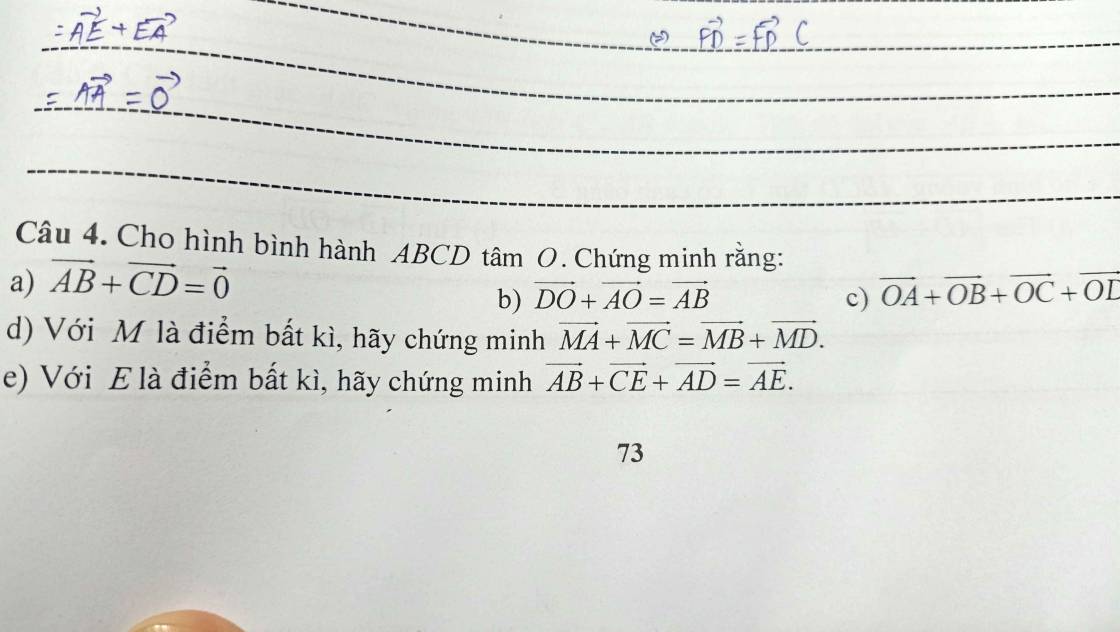
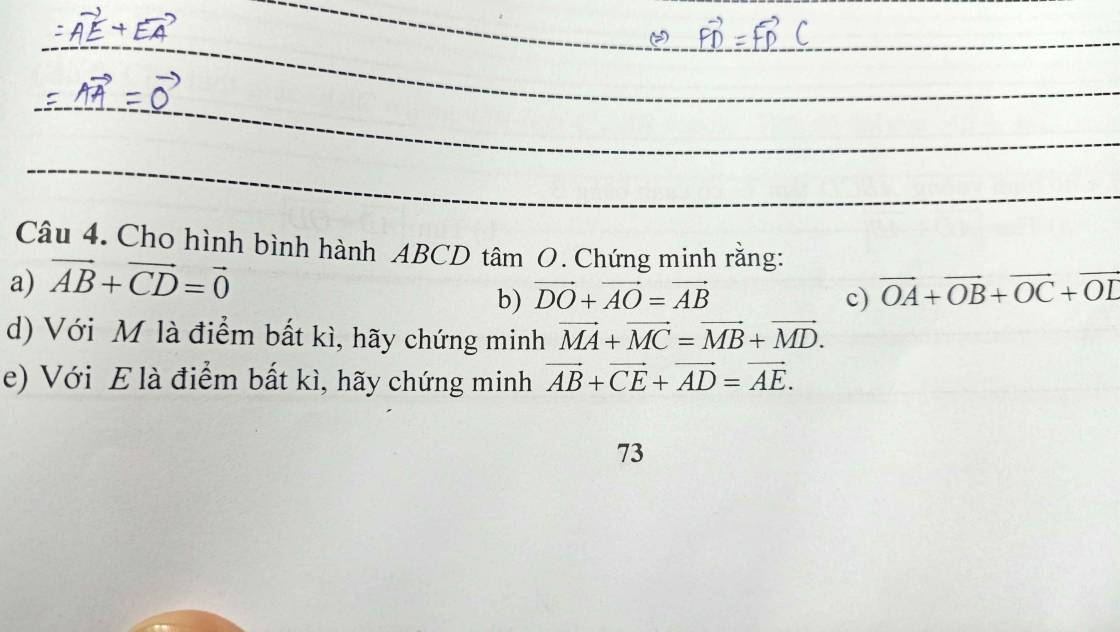
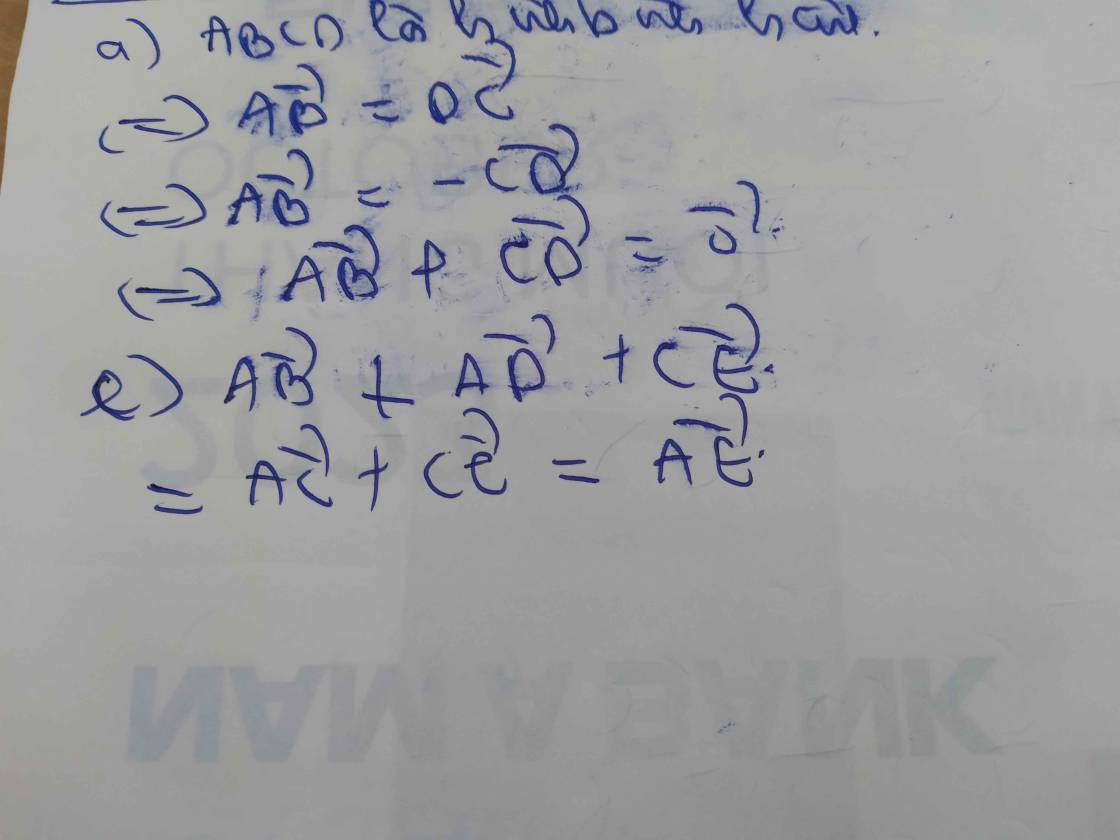
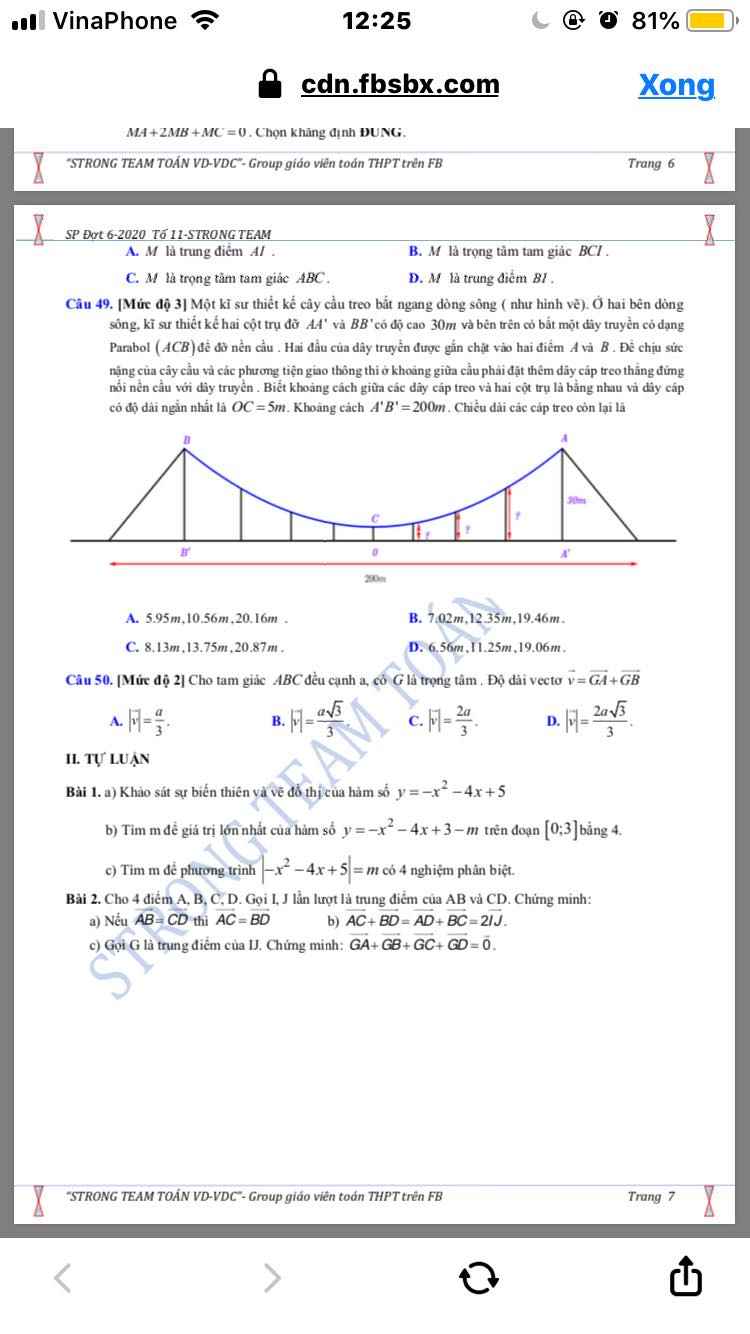 nhiều
nhiều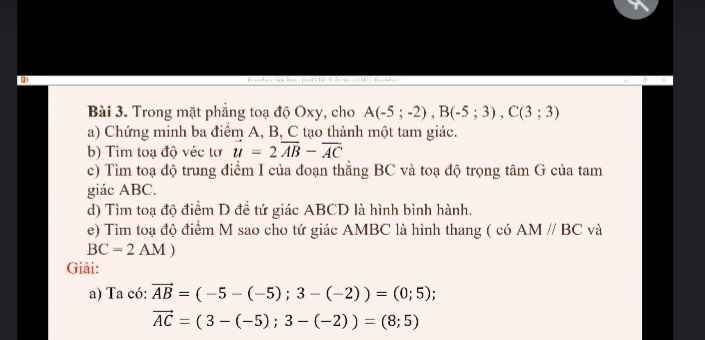

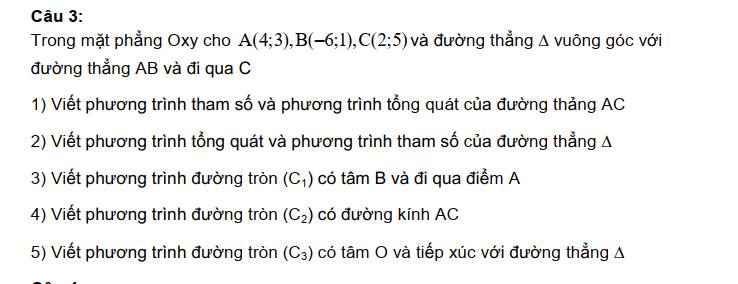


\(\Leftrightarrow\left\{{}\begin{matrix}3x_1+x_2=-2\\x_1+x_2=2m-2\end{matrix}\right.\Leftrightarrow\left\{{}\begin{matrix}2x_1=-2m\\x_1+x_2=2m-2\end{matrix}\right.\Leftrightarrow\left\{{}\begin{matrix}x_1=-m\\x_2=2m-2+m=3m-2\end{matrix}\right.\)
\(x_1\cdot x_2=m^2-3m\)
\(\Leftrightarrow-3m^2+2m-m^2+3m=0\)
\(\Leftrightarrow-4m^2+5m=0\)
\(\Leftrightarrow m\left(4m-5\right)=0\)
=>m=0 hoặc m=5/4